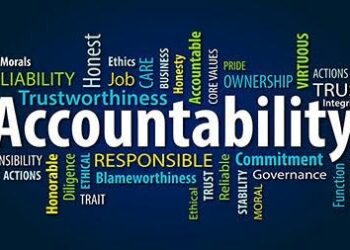The COVID-19 pandemic has forced many organizations to shift to a hybrid or fully remote work environment, requiring leaders to adapt their leadership styles to effectively manage remote teams. Leading remote teams can present unique challenges, such as communication barriers and lack of in-person interaction. However, with the right strategies and techniques, leaders can effectively lead and support their remote teams.
This piece is the third article of a 5-articles series to kickstart your journey to exceptional leadership in the new year. Stay tuned for practical tips on how to improve your hybrid leadership skills.
What Is Hybrid Leadership?
During the pandemic, leaders discovered that employees could maintain productivity when working remotely. In some cases, the productivity levels were significantly higher than before the pandemic.
As the worst of the pandemic is now behind us (at least in Nigeria), a significant number of staff members & organisations aren’t willing to completely let go of remote working. The hybrid model aims to find a balance between the two work environments. It ensures the employees have the desired work flexibility and the advantages of a shared physical workspace.
Hybrid leadership therefore is a new approach that focuses on diverse attributes such as:
Psychological safety and health
Creating self-awareness
Conversational skills
Emotional intelligence
It is apparent that the emerging knowledge economy will be powered by self-motivated and highly skilled indviduals with a preference for work autonomy. It is therefore imperative to recognise that working in the hybrid mode is likely to continue to be the norm.
Key Lessons on making hybrid Leadership work
Recent research in hybrid leadership appear to suggest a need for leaders in the hybrid environment to focus their energies on the following five themes:
Communicate effectively: In a remote work environment, clear and consistent communication is key. This can be achieved through regular team meetings, individual check-ins, and using tools such as video conferencing and project management software.
Foster a sense of connection: It can be easy for remote team members to feel isolated, so it’s important for leaders to find ways to foster a sense of connection and community. This can be done through virtual team building activities, social events, or simply by making time for casual conversation during meetings.
Set clear expectations: Remote team members need to know what is expected of them, so it’s important for leaders to set clear goals, deadlines, and expectations. This can be done through regular performance evaluations and setting specific, measurable, achievable, relevant, and time-bound (SMART) goals.
Provide resources and support: In order for remote team members to work effectively, they need to have the necessary resources and support. This includes providing them with the technology and tools they need to do their job, as well as offering ongoing training and development opportunities.
Trust and hold accountable: Trust is crucial in any leadership role, but it can be especially challenging to build trust with a remote team. Leaders can earn trust by being reliable, transparent, and consistent. It’s also important to hold remote team members accountable for meeting deadlines and achieving results, while still providing support and guidance when needed.
As you step into 2023 with renewed vigour and zeal, ask yourself the following questions to enhance your hybrid leadership skills:
How has your leadership style had to adapt in a remote work environment?
What strategies have you found most effective for communicating with and supporting your remote team?
What challenges have you faced in leading a remote team, and how have you overcome them?
How do you build trust and accountability with your remote team members?
In what ways have you had to be flexible and adaptable as a leader in the hybrid/remote world?
You can make this year your most effective year ever, by following these and many simple tips for leading hybrid teams with confidence.





